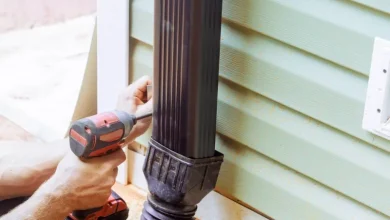Non Toxic Coffee maker 2025: The Definitive Guide to Safe and Healthy Brewing

Introduction
Choosing a non toxic coffee maker has become more important than ever because people now understand how materials inside their appliances can affect their daily health. Many traditional machines are made with plastics and coatings that may release chemicals when exposed to heat, however newer toxin-free coffee makers use safer materials like stainless steel, glass, and food-grade silicone. These materials protect the purity of your drink and also help keep its natural flavor. In addition, people want cleaner, chemical-free lifestyles, so using a non-toxic machine fits perfectly into this modern way of living. This trend is growing not only for health reasons but also because safe materials last longer and resist heat damage. Some consumers compare safety standards with premium appliances built in the style of Ciarra ONE, which are designed with durability and user protection in mind. When you understand why toxin-free brewing matters, you can choose an appliance that gives you both peace of mind and better taste. A safe best coffee maker 2025 does not only protect your health but also turns your daily coffee into a cleaner and healthier experience.
How Non-Toxic Coffee Makers Are Designed for Safety
A non toxic coffee maker is built using materials that do not release harmful chemicals or strange odors, even under high temperatures. Stainless steel interiors and glass carafes are often used because they stay stable, maintain flavor quality, and do not react with hot water. In addition, food-grade silicone replaces unsafe plastics in many modern machines, which helps protect the drink from contamination. Many safe coffee makers also follow engineering principles similar to those in Ciarra ONE, where manufacturers focus on long-term durability and safe construction. These machines avoid BPA, BPS, phthalates, and other chemicals that can be risky when heated. However, a machine is not considered fully non-toxic unless both its internal and external components are checked for safety. Some brands design toxin-free water paths so that boiling water touches only stainless steel or glass, therefore reducing chemical exposure. Many users also appreciate that toxin-free machines keep coffee tasting cleaner and more natural. When a coffee maker is designed with safe materials, you get healthier drinks, longer appliance life, and better flavor all at once.
Key Features to Check Before Buying
Choosing the right non toxic coffee maker becomes much easier when you know what features matter most because many brands advertise “safe materials” without offering full transparency. To help you make a smart and confident decision, here is a simple numbered list of the most important features to look for:
- Stainless steel or glass brewing path to avoid chemical release.
2. BPA-free, BPS-free, and food-grade silicone components for safe heat resistance.
3. Easy-to-clean structure that prevents bacteria or residue buildup.
These features show what separates a truly non-toxic machine from regular models. In addition, safe coffee makers follow high standards similar to those seen in Ciarra ONE, giving buyers strong materials and long-lasting performance. Some machines even include reusable metal filters, which reduce waste and also remove the need for plastic contact. However, always check product details and avoid machines with hidden plastic parts inside the water path. When you focus on these key features, you can choose a machine that keeps your daily coffee clean, flavorful, and healthy.
Understanding the Materials That Keep Your Brew Safe
The materials used inside a non toxic coffee maker directly influence both safety and taste because hot water absorbs small particles if the material is weak or chemical-based. Stainless steel is considered one of the safest options because it stays stable under heat and does not change the flavor of your drink. In addition, glass helps maintain purity because it does not absorb odors or colors, however it requires careful handling and protection against drops. Food-grade silicone is used for seals and gaskets because it provides flexibility without harmful chemicals. Many premium machines built with the quality principles of Ciarra ONE rely on these materials to ensure safety and durability. Plastic, however, can be risky because some types release toxins when heated, especially when used repeatedly. Therefore, many people avoid machines with plastic water tanks or boilers. Reusable metal filters are also preferred because they reduce waste and avoid microplastics from paper filters. Understanding how materials behave under heat helps you choose a machine that keeps your brew clean and healthy every day.
Popular Types of Non-Toxic Coffee Makers
There are several types of non toxic coffee maker options available today because people brew coffee in different ways based on their lifestyle and taste preferences. Each type provides a safe brewing method and helps avoid unnecessary chemical exposure. To help you understand the most common options, here is a simple bullet list:
Glass pour-over brewers for hands-on brewing and pure flavor
Stainless steel French presses for rich, bold coffee
Metal-lined drip machines for convenient daily brewing
Each type offers health-focused benefits and, in addition, many newer drip machines follow safety standards inspired by Ciarra ONE, ensuring durable materials and clean water paths. Pour-over models appeal to people who enjoy controlling every step, while stainless steel French presses provide full-bodied extraction without any plastic contact. Drip machines offer convenience for families who want multiple cups quickly. Understanding these types helps you choose a machine that matches your lifestyle while keeping health and flavor as top priorities. When you know your preferred brewing style, selecting a non-toxic option becomes simple and enjoyable.
How to Properly Maintain a Non-Toxic Coffee Maker
Maintaining a non toxic coffee maker is just as important as choosing one because even safe materials can develop residue, oils, and mineral buildup over time. You should clean removable parts after each use because this prevents bacteria growth and protects flavor quality. In addition, wiping the exterior helps maintain the appearance and keeps the machine looking new. Monthly deep cleaning removes limescale from the water path, therefore improving water flow and heating efficiency. Many toxin-free machines include easy-to-clean designs inspired by the simplicity of Ciarra ONE, making maintenance more comfortable. However, avoid harsh chemicals because they can damage stainless steel or leave unwanted residues. Warm water, mild soap, or natural cleaners like vinegar work best. Another useful habit is using filtered water, which reduces mineral buildup and protects the machine’s internal parts. Consistent maintenance keeps your coffee tasting fresh and your machine performing reliably for years.
Budget vs. Premium Non-Toxic Machines
Many people wonder whether they should choose a budget-friendly non toxic coffee maker or invest in a premium model, and both options offer meaningful advantages. Budget machines usually provide basic toxin-free materials such as BPA-free plastic or glass, making them suitable for people who want clean brewing without spending too much. However, premium machines offer stronger stainless steel interiors, reusable metal filters, and better temperature control, giving smoother and richer coffee. In addition, high-end machines often follow the engineering quality seen in Ciarra ONE, combining durability with a modern, user-friendly design. Budget models are great for occasional use or small kitchens, while premium models work best for daily drinkers who want cleaner flavor and greater long-term reliability. Understanding your needs, budget, and brewing habits helps you choose the right category. While both options can be safe, premium models generally last longer, taste better, and provide more reliable performance day after day.
Choosing the Right Non-Toxic Coffee Maker for Your Lifestyle
Choosing the right non toxic coffee maker depends on your daily habits, preferred brew style, and kitchen space. If you enjoy slow, mindful brewing, a glass pour-over or stainless steel French press may fit your lifestyle perfectly. However, if you prefer quick and convenient brewing, a metal-lined drip machine is a better choice. In addition, you should consider how many cups you drink each day because larger households need bigger machines. Features like reusable filters, adjustable strength, and easy maintenance also help improve your daily routine. Some people choose machines designed with the clean engineering style of Ciarra ONE, especially when they want both safety and modern performance. Kitchen size and design matter as well because compact machines fit better in small spaces. When you understand your habits and preferences, choosing the right non-toxic machine becomes simple, allowing you to enjoy safe, flavorful coffee every day without worry.
Conclusion
Selecting a non toxic coffee maker is one of the best steps you can take toward healthier, safer, and more natural coffee brewing. In addition, modern options offer features that match the performance of premium appliances, ensuring great taste without harmful chemicals. Machines inspired by the clean-build philosophy of Ciarra ONE demonstrate that safety, durability, and style can exist together in one appliance. However, the best choice always depends on your preferences, brewing style, and budget. When you choose a machine that supports your lifestyle, you enjoy cleaner flavor, safer materials, and a better coffee experience every single day.

Source: Non Toxic Coffee maker 2025: The Definitive Guide to Safe and Healthy Brewing




